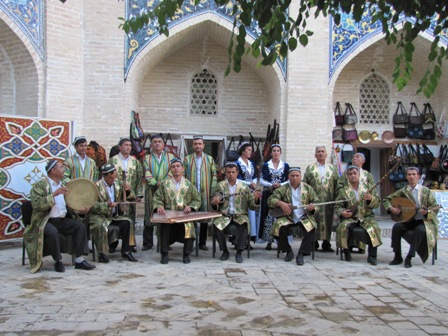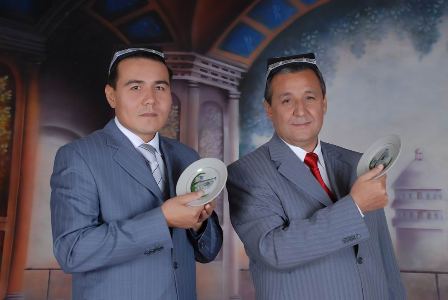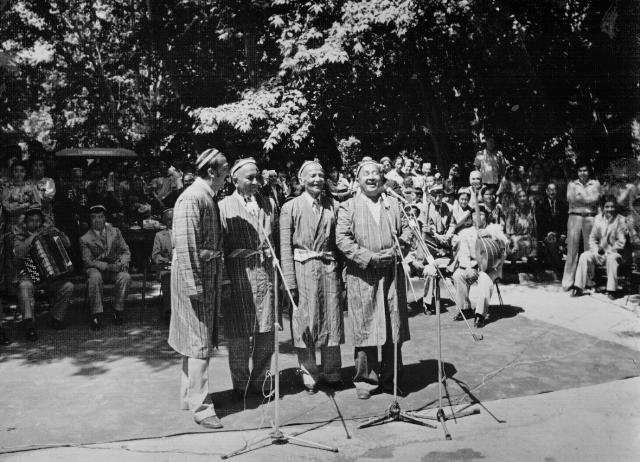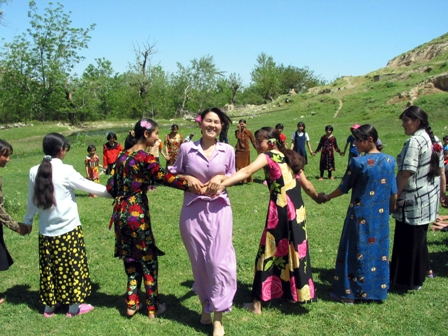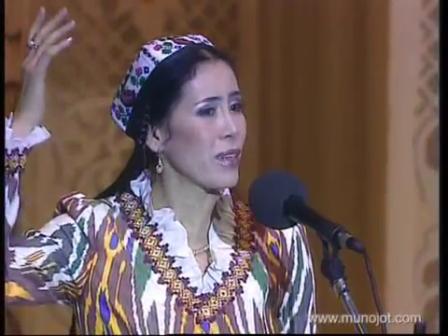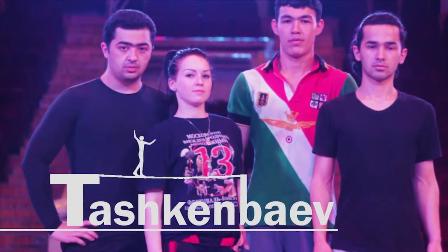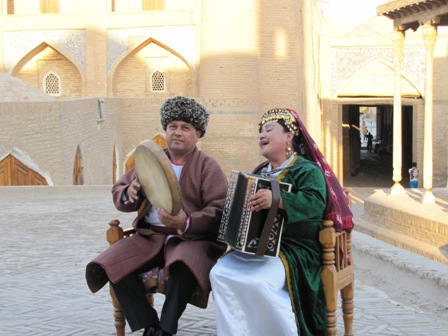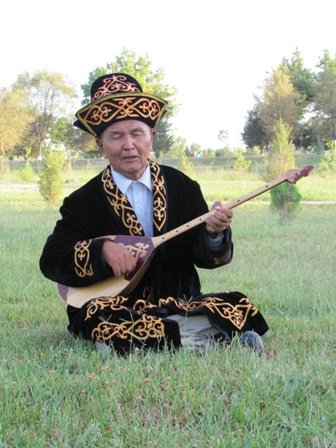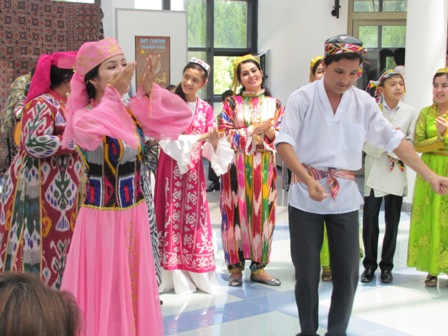|
Shashmaqom (in Persian - "Six maqoms") is leading genre of musical heritage of Uzbek and Tajik people. It includes a cycle of complex and perfect instrumental as well as vocal compositions encompassing different melos, forms, usuls (rythm formulae) and performances. Maqomat (maqom art) – is a phenomenon of spiritual culture of people of Central Asian region. Its artistic as well as historical value goes much beyond the borders of the region and made an impact on the development of world musical processes. |
|
Katta ashula ("Great Song") or Patnis ashula ("Tray Song") is typical for the Ferghana Valley song direction and peculiar style of performance. It is performed by two or more (up to five) singers in turns and without accompaniment of musical instruments. Main features of this type of song is impromptu, a single rhythm, performance on a high pitch, with deep breath, free style and consonance of words and rhythm. |
|
Askiya is the genre of Uzbek oral art, which is not be found in any other country. Jokes and humor not only provide a spark to individuals, but also help to define and shape their aesthetic tastes while parallel enlightening them. Askiya is the game of words and competition of a mind, which requires significant life experience, skills and creativity, tactfulness, intelligence, sensitiveness, relevant and appropriate answers as well as worthy behavior. |
|
Game is the means for education and recreation. Throughout the history of mankind game was integral part of religious ceremonies, military exercises, arts and its types. It is well known that during his lifetime a person is engaged in many activities, such as playing games, studying, taking rest, etc. And in the initial period of person's life, game is considered to be the main type of activity. At a later stage he will be playing a game parallel to his studies. Eventually, its role will diminish and its place will be replaced by studies and work. |





